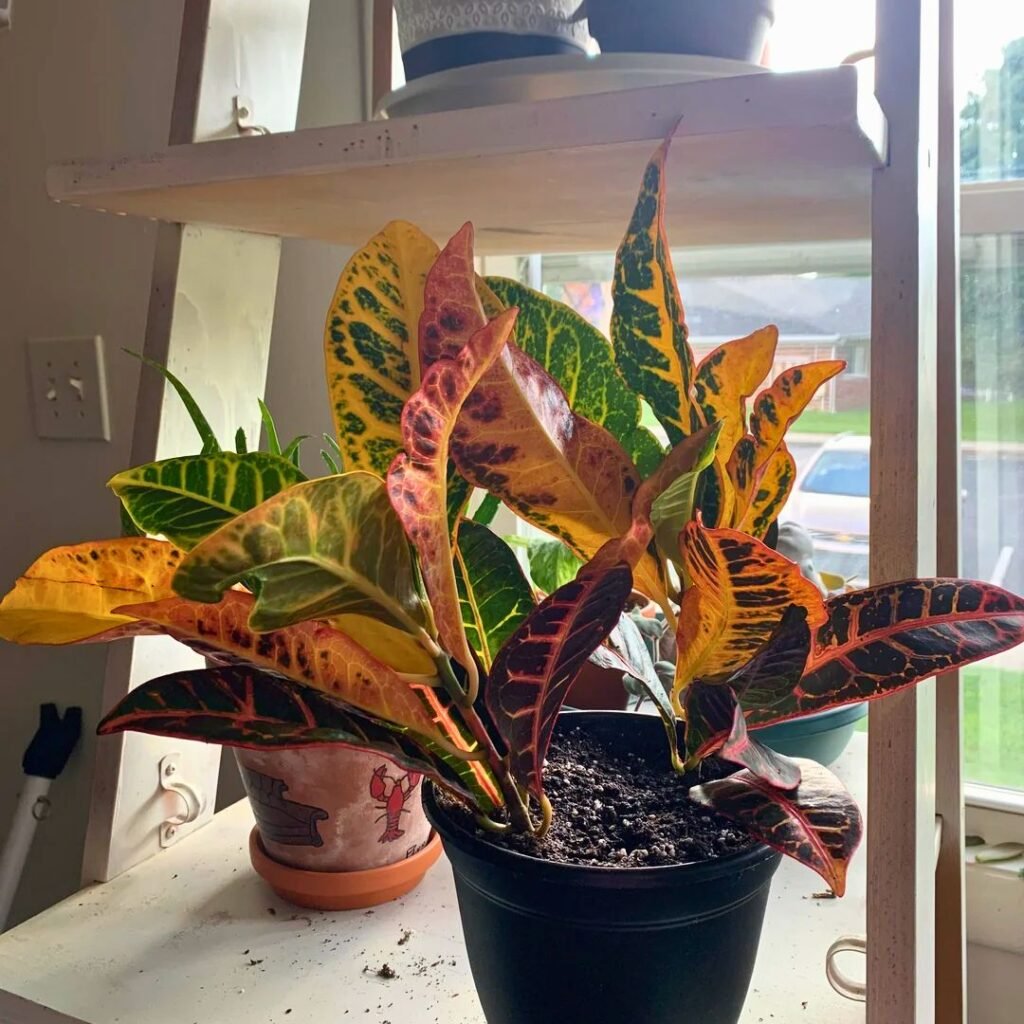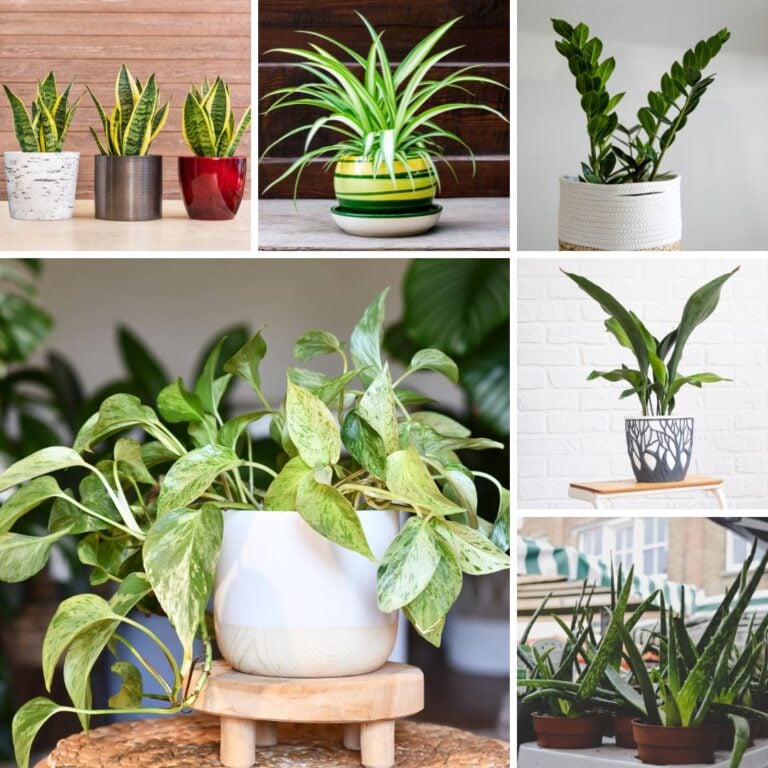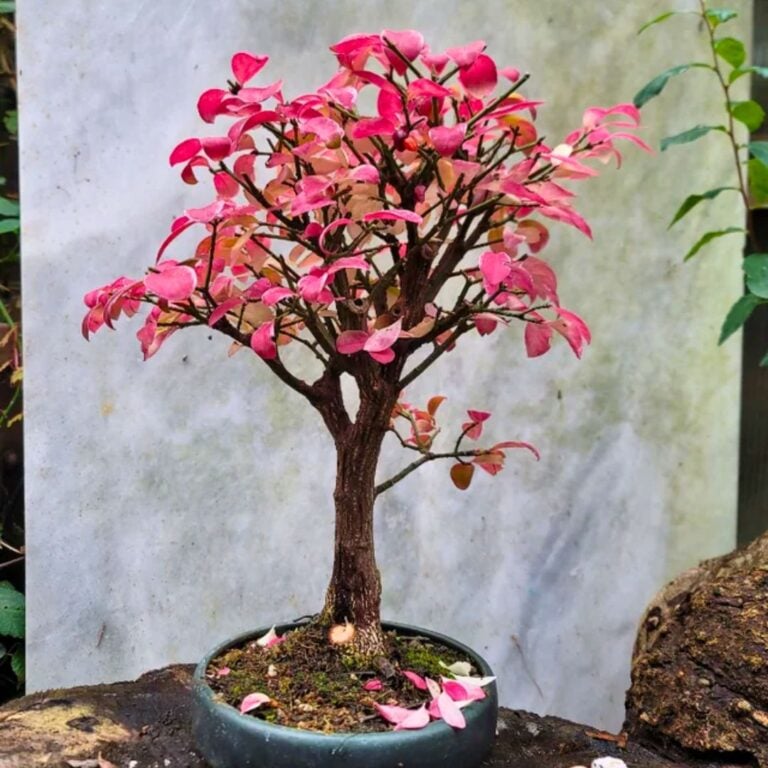5 Foliage Plants That Show Off Stunning Summer Color
I love watching my garden explode with color every summer. Sure, flowers get a lot of hype, but honestly, I think foliage plants can be just as striking—sometimes even more so.
Foliage plants with bold colors and patterns bring a whole new energy to my outdoor spaces. Even when flowers take a break, these leaves make my garden feel lively and fun.
Please note: Simplify Plants is reader-supported. As an Amazon Associate, I earn from qualifying purchases made by our readers with no extra cost added to you all! Some links in the post are affiliate links and I get a commission from purchases made through links in the post.
1) Coleus ‘Wizard Mix’

When I’m after easy, all-summer color, I always reach for Coleus ‘Wizard Mix’. The leaves come in wild shades of red, green, yellow, and pink—sometimes all on one plant.
Some varieties have these quirky patterns that are just fun to stare at. I love that Coleus thrives in both sun and shade, making it a breeze to tuck into garden beds or pots.
They usually stay around a foot tall, so they’re perfect for borders or containers. I don’t fuss much over soil—just water when the top feels dry.
Pinching the tips keeps them bushy and full, which is a little trick I swear by. I like mixing Coleus with plainer green plants or summer flowers for a nice contrast.
Sometimes, I even stick a few in indoor pots by a sunny window. If I want more, I’ll snip cuttings and root them in water—super easy.
The colors stay bold all summer, especially if I keep them out of harsh midday sun. I admit, I love showing off their unique leaves to friends.
Coleus ‘Wizard Mix’ just adds that instant pop of color wherever I put it.
2) Caladium ‘Pink Symphony’

Caladium ‘Pink Symphony’ is my go-to for brightening up shady corners. Those heart-shaped leaves with bold pink centers and slim green edges just pop, even under trees or on a porch.
Whenever I plant ‘Pink Symphony’ in pots or beds, people always notice. The leaves can get pretty big—up to a foot long—so they make a real statement.
Warm weather really gets them going. I wait until after frost to plant the bulbs.
From what I’ve seen, filtered shade keeps the colors brightest. Too much sun and the pink can fade, which is a bit of a bummer.
These don’t need much fussing over. I water when the soil dries out and toss in a little fertilizer now and then.
They’ll even grow indoors if it’s warm enough and they get some light.
If I want extra wow factor, I’ll group a few together. The pink leaves really shine in a bunch.
I do check for pests like spider mites, but honestly, problems are rare. A quick wipe with a damp cloth keeps the leaves looking sharp.
3) Croton ‘Petra’

For a real burst of color, I go for Croton ‘Petra’. The leaves mix green, red, orange, and yellow—sometimes all at once, which is wild.
I keep mine where it gets plenty of indirect light. Bright light helps those colors really show off.
If it doesn’t get enough sun, the colors can fade, which is a bit disappointing.
This plant likes warm temperatures and doesn’t handle cold at all. I make sure to keep it away from chilly drafts, especially at night.
Croton ‘Petra’ wants its soil a bit moist, but never soggy. That balance can be tricky, but it’s worth it.
Humidity makes a big difference. I mist the leaves or set a tray of water nearby, and the colors always seem brighter when the plant’s happy.
The thick, glossy leaves are easy to wipe clean. If they look dull, a quick clean-up brings back their shine.
If you’re after a plant that’s basically a living rainbow, this is it. It always gets comments from friends.
Just know it likes a little extra care to stay at its best.
4) Ti Plant ‘Red Sister’

The Ti Plant ‘Red Sister’ is a showstopper with its bright pink and deep burgundy leaves. It’s tropical and dramatic—definitely not a wallflower.
When the summer sun hits, the colors practically glow. I’ve noticed they look their best in filtered sunlight, almost like they’re lit from within.
This plant can reach up to 5 feet tall, so it’s perfect for adding height to a garden bed or patio.
I keep mine in light shade and make sure the soil is moist, but not soggy. Misting the leaves during hot spells helps, too.
A little extra care goes a long way with this one. I check on it a few times a week to keep it looking sharp.
It does best outside in warm places, but I’ve grown it indoors by a sunny window as well. Just keep it away from cold drafts and dry air.
The leaves really brighten up any space. I’m convinced the look and easy care of Ti Plant ‘Red Sister’ make it worth adding to any summer plant lineup.
5) Japanese Maple ‘Bloodgood’

The Japanese Maple ‘Bloodgood’ is one of my favorites for deep, rich red leaves all summer. The color is so bold it’s almost dramatic.
Those hand-shaped leaves bring a lot of elegance, and the tree itself stays a nice size—about 15-20 feet tall. I find it fits most gardens, or even a big pot if you’re short on space.
It looks fantastic near patios or walkways. ‘Bloodgood’ likes partial shade, but it can handle some sun too.
I try to keep its soil moist, never soggy. If it gets too much hot afternoon sun, the color can fade, so I pick a spot with a bit of protection.
It grows slowly, so I don’t have to prune much. As it matures, the branches spread out in these cool shapes.
Even in winter, the bare branches add a little something. Japanese Maples rarely have major pest problems, which is a relief.
A layer of mulch keeps the roots cool and happy. The ‘Bloodgood’ variety is a simple way to get lasting, bold color into my landscape.
How Foliage Plants Add Vibrant Summer Color
Some plants just stand out by their leaves alone. I’m always amazed how much color you can get from foliage, not just flowers.
Understanding why leaves change color—and what makes them so vibrant—helps me choose the best options for my garden.
Understanding Leaf Pigments and Variations
Leaf color all comes down to pigments like chlorophyll, carotenoids, and anthocyanins.
- Chlorophyll gives that classic green.
- Carotenoids bring in yellow or orange.
- Anthocyanins add red, purple, or blue.
Plants like coleus and caladium mix these pigments, which is how you get those wild patterns. Pigments can shift with the seasons, too.
Sometimes, more sunlight brings out deeper reds or purples. It’s a mix of genetics and sunlight that makes each plant’s color unique.
I always look for varieties with lots of pigment for the brightest displays.
Best Lighting Conditions For Bold Hues
Leaf color gets bolder in the right lighting. Most colorful foliage does best in bright, indirect light.
Too much shade and the colors go dull. Some, like croton, need full sun for their deepest hues.
Others, like coleus, prefer filtered light or they can get sunburned. I move my plants around until I find the sweet spot.
The right amount of sun keeps them looking sharp all summer.
Tips For Maximizing Summer Color in Your Garden
I try to set up my garden so those bright leaves really catch the light. Picking the right combos and keeping up with care keeps everything looking fresh.
Companion Planting Strategies
Pairing bold foliage with plainer leaves is one of my favorite tricks. It makes the colors stand out even more.
Mixing different leaf shapes and heights adds layers of interest. For example, I’ll plant chartreuse coleus next to dark-leaved begonias or purple sweet potato vine.
Here’s a quick chart I use to group my plants:
| Color Contrast | Examples |
|---|---|
| Light + Dark | Lemon-lime coleus + Black Mondo Grass |
| Warm + Cool | Red caladium + Blue fescue grass |
Grouping plants like this makes the garden pop from every angle. I keep shade-lovers under trees and sun-lovers out where they can soak it up.
Seasonal Care and Maintenance
To keep those colors bright, I water regularly. Hot days dry things out fast, so I check the soil daily.
I snip off any faded or brown leaves to keep things tidy and encourage new growth. A dose of slow-release fertilizer at the start and mid-summer keeps leaves lush.
If I spot pests or disease, I act fast—mild soap spray or just picking off problem leaves usually does the trick. I avoid getting water on the leaves during hot sun, since that can cause spots.
A layer of mulch locks in moisture and keeps weeds down. It’s a small step that really helps my colorful plants last.
Frequently Asked Questions
People often ask me which plants bring the most color to summer gardens. I always have a few favorites that keep things bright, even in the heat.
What are the best plants for adding vibrant color to a summer garden?
Coleus ‘Wizard Mix’ has wild, multi-colored leaves and grows well in shade or sun.
Caladium ‘Pink Symphony’ shows off heart-shaped leaves with pink and green patterns that really pop.
Croton ‘Petra’ brings tropical vibes with orange, yellow, and green hues.
Ti Plant ‘Red Sister’ is famous for its electric red and pink foliage.
Japanese Maple ‘Bloodgood’ adds deep red to purple leaves for a dramatic touch.
Which flowers thrive in high heat and full sun conditions?
Zinnias and dahlias love the sun and heat. Hibiscus flowers thrive in warm summers and just need enough water.
Marigolds and sunflowers are tough, too—they never seem to mind the heat.
How do you care for a hibiscus during the hot summer months?
I make sure hibiscus gets full sun and keep the soil moist. A balanced fertilizer every couple of weeks helps.
Deadheading faded flowers keeps them blooming for longer.
Can zinnias add a long-lasting pop of color to my outdoor space?
Absolutely. Zinnias bloom for months if you give them sun and keep up with deadheading.
They come in so many colors and attract butterflies, which is a nice bonus.
What tips can help peonies flourish in a summer garden setting?
Peonies really love sunlight—shoot for at least six hours a day if you can swing it.
When I water mine, I aim for the base. It helps keep the leaves dry, which seems to cut down on disease.
Heavy blooms? I usually prop them up with stakes. Otherwise, they’re liable to flop all over the place.
Are dahlias suitable for a summer garden, and how should I maintain them?
Dahlias really thrive in full sun and well-drained soil. I usually water them deeply a few times a week—honestly, it depends on how hot it gets.
A layer of mulch goes a long way to keep the roots cool. If you pinch back the early growth, they tend to get bushier and you’ll probably see more blooms.
I try to remember to remove dead flowers whenever I spot them. It just keeps the plants looking healthy and bright.
Recommended Garden Supplies
| Product Image | Our Recommended Gardening Supplies | Check Offers! |
|---|---|---|
Top Top
Top
Top
Top
Top
Top
Top
Top | rePotme Houseplant and Tropical Classic Potting Soil Mix | Check Offer On Amazon |
 Top
Top
Top
Top
Top
Top
Top
Top | Espoma Organic Indoor Plant Food | Check Offer On Amazon |
 Top
Top
Top
Top
Top
Top
Top
Top | GooingTop LED Grow Light 6000K Full Spectrum Clip Plant Growing Lamp | Check Offer On Amazon |
 Top
Top
Top
Top
Top
Top
Top
Top | Soil Moisture Meter | Check Offer On Amazon |
 Top
Top
Top
Top
Top
Top
Top
Top | Govee Hygrometer Thermometer, Bluetooth Enabled! | Check Offer On Amazon |
 Top
Top | LEVOIT Humidifiers for Large Room(Best For Plants) | Check Offer On Amazon |
 Top
Top
Top
Top
Top
Top
Top
Top | Upgraded DIY Automatic Drip Irrigation Kit, 15 Potted Houseplants Support | Check Offer On Amazon |
 Top
Top
Top
Top
Top
Top
Top
Top | Stainless Steel Heavy Duty Gardening Tool Set | Check Offer On Amazon |
 Top
Top
Top
Top
Top
Top
Top
Top | Bonide Insecticidal Soap | Check Offer On Amazon |
 Top
Top
Top
Top
Top
Top
Top
Top | Bonide 32 oz Spray Neem Oil for Organic Gardening | Check Offer On Amazon |
 Top
Top
Top
Top
Top
Top
Top
Top | Garden Safe Fungicide | Check Offer On Amazon |






